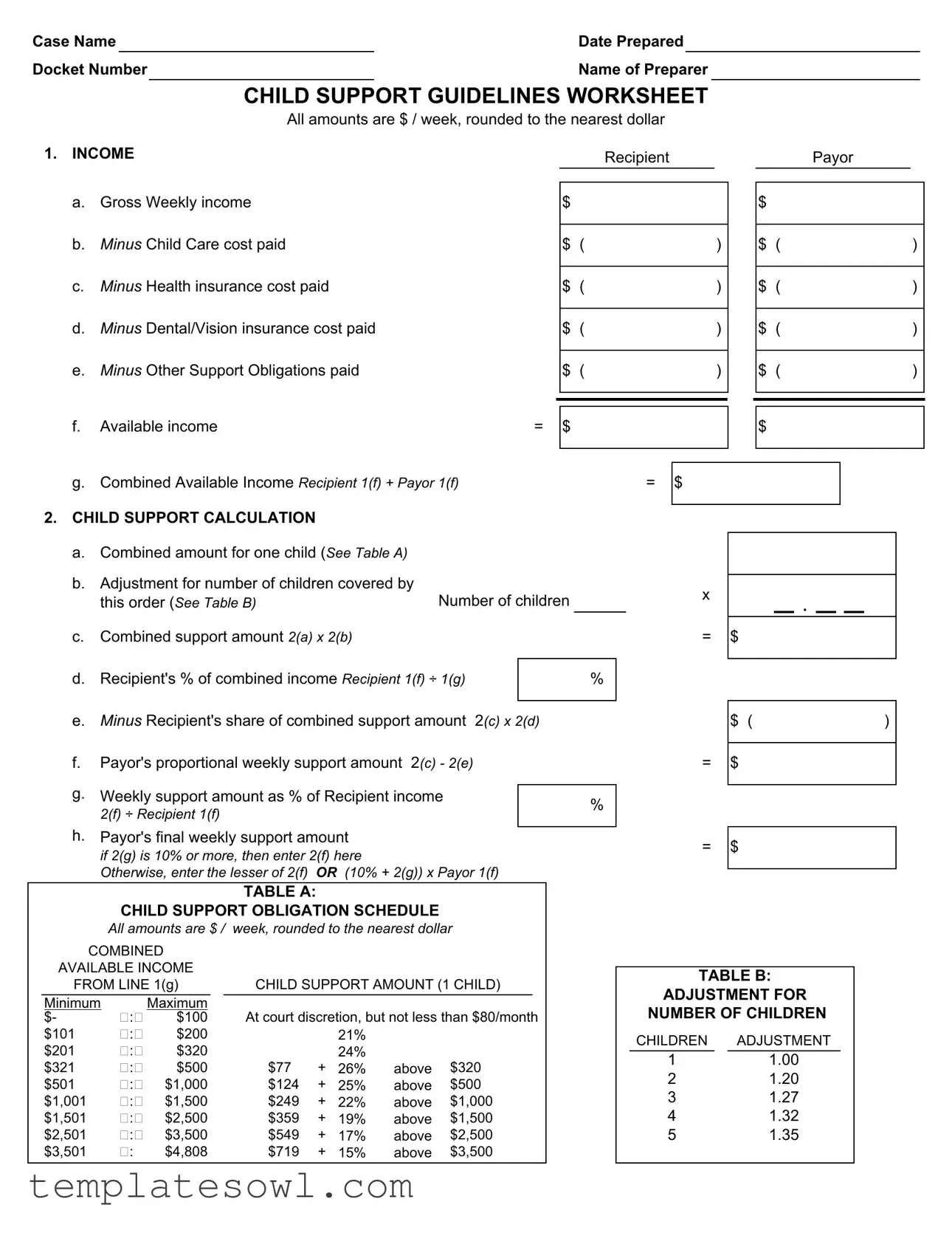What is the purpose of the Child Support Worksheet?
The Child Support Worksheet is designed to help determine the amount of child support that should be paid. It collects information about both parents' incomes and expenses related to the children. By following the guidelines in the worksheet, parents can establish a fair support amount based on their financial situations.
How is gross weekly income calculated on the worksheet?
Gross weekly income refers to the total amount each parent earns before any deductions. To complete this section, list all sources of income, including wages, bonuses, and other earnings. This amount is used to determine how much financial support each parent can contribute.
What expenses can be deducted from gross income?
The worksheet allows for certain deductions from gross income. Parents can subtract child care costs, health insurance fees, dental and vision insurance costs, and any other support obligations. This helps to arrive at an available income figure that reflects the actual financial resources each parent has for child support.
How do you calculate combined available income?
To calculate combined available income, add the available income of both the recipient and the payor. This involves summing the available income amounts from both parents, as indicated in the worksheet. The resulting total provides a comprehensive view of the family’s financial capabilities.
What is Table A, and how does it affect the child support calculation?
Table A outlines the child support obligation amounts based on combined available income. The table specifies a minimum and maximum amount of support for one child. It helps parents see the expected child support obligation based on their combined income, making the calculation more straightforward.
How does the number of children affect support calculations?
The worksheet includes Table B, which provides an adjustment for the number of children covered by the support order. This adjustment is crucial, as it changes the total amount of support owed. The more children involved, the different the calculation will become according to the table's guidelines.
What happens if the calculated support amount is too low?
If the final weekly support amount is deemed too low, or if it does not meet the minimum requirement of 10% of the payor's income, the worksheet has guidelines for the payor's contribution. The worksheet ensures the child support amount reflects both parental responsibilities and the needs of the child.

